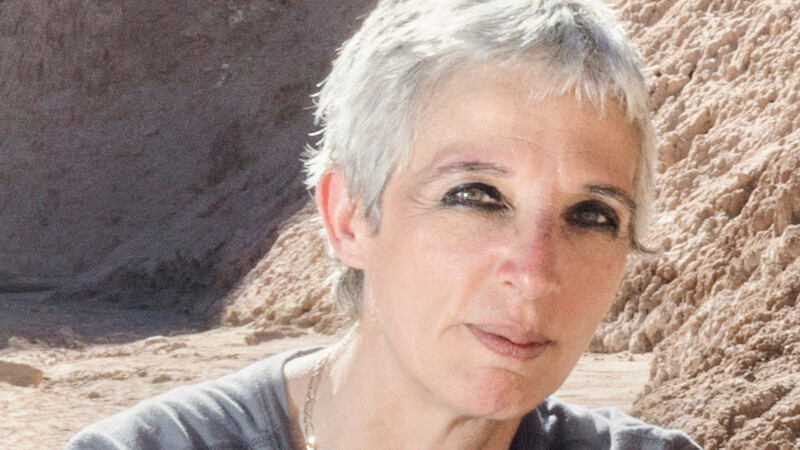You are viewing your 1 free article this month. Login to read more articles.
Donald Sturrock: The Life of Roald Dahl
"He seemed larger than the doorway I remember, this large figure with a stick peering down at me. I thought gosh, he's quite intimidating and he had this deep, quite growly voice." Donald Sturrock is recalling the very first time he met Roald Dahl, back in 1985, when the then 23-year-old Sturrock was a lowly director at the BBC who had proposed "the most famous living children's author" as the subject of a documentary.
Astonishingly, it was the first time that Dahl, then in his late sixties, had been approached by the BBC and Sturrock, despite being warned that the author might be "difficult", found him to be extremely amenable. The pair got on like a house on fire ‚ Dahl even allowed him to film inside his famous writing hut ‚ and, over the next four years, a real friendship developed: "I think he liked the company of younger men, he loved the company of women and he was surrounded by women but... Roald enjoyed sparky, slightly banter-ish male company, he didn't get that a lot from his contemporaries. He quite enjoyed having a younger person who ‚ I wouldn't say was in his thrall ‚ but I was quite chuffed that he had taken a liking to me."
No ordinary life
Twenty-five years later and Sturrock has turned his memories, and years of research, into the first authorised biography Storyteller: The Life of Roald Dahl (HarperPress, September). As Sturrock says "This was no ordinary writer's life. For many writers the most interesting thing about them is what goes on in their heads... but he'd actually lived a life extraordinarily full of events which were pretty dramatic in their own right."
Dahl's fame continues to grow, worldwide sales of his books have apparently topped 100 million, but one of the many intriguing things covered in the book is just how hard he struggled for recognition as a writer, particularly in the UK. In our post-Potter world, where J K Rowling and Philip Pullman command enormous respect, it's truly striking how little acclaim Dahl received in his lifetime.
Shortly before he died in 1990 Dahl had nominated his daughter Ophelia as his biographer; she made a start but in 2006 asked Sturrock if he wanted to take over.
Besides his own research for the television documentaries (he made a second documentary in 1998 where he interviewed Dahl's sisters and contemporaries at length), Sturrock was also granted full access to the archives in the Roald Dahl Museum and Story Centre. I ask about the volume of papers he read through. He starts to laugh, "I couldn't possibly tell you, but the archive in Great Missenden has filing cabinets floor to ceiling for about 20 feet. And that was just the starting point." He also visited Columbia University, New York, where Dahl's correspondence with his American literary agents is housed, naively imaging he would get through the letters "in a week of eight hour days", whereas it took him a month "going in every day and really working like the clappers to get through it."
"I think it's a relatively common thing for biographers but you do feel that the more you look, the more you find. The task seems endless... in the end the time limit is the other pressure, if you don't start writing you're not going to deliver in time." In fact, the book is a year late due to a last-minute find ‚ a cache of letters Dahl sent to his friend Charles Marsh which reveal his state of mind at turning points in his life ‚ the beginning of his marriage to actress Patricia Neal, and his near-breakdown when his second novel for adults failed.
Treasured discovery
But of all the hours and hours Sturrock spent in libraries and archives, his most treasured discovery was handed to him in a plastic bag one night over dinner. He remembers that Dahl's widow Felicity, known as Liccy, had warned him when he started working on the book that she would never show him any of the love letters Dahl had written to her ‚ "they'll be buried with me when I die". But she later relented, and of the three love letters, extensively quoted, Sturrock says "they really do shed the most striking and unexpected light on Roald."
Dahl published two slim volumes of memoirs written for children, Boy: Tales of Childhood (1984) and Going Solo (1986), so while many of the thrilling incidents which pepper his early life are known ‚ in particular his wartime experiences as a pilot in North Africa ‚ it's through Dahl's own letters that Sturrock hopes to reveal "the personal voice ‚ how he wrote about [events] at the time... [later on] he was more interested in telling a good story than he was about telling something that was truthful." He adds: "Whenever he told a story it was never of himself in a role where he was uncertain, insecure or vulnerable, which was a side he definitely had. If you look at the correspondence of the time you can see [this] quite clearly in certain times of crisis, but he tended to rewrite those events when he retold them himself, in a light where he was always in control."










